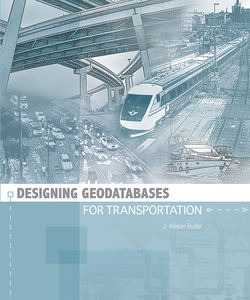Читать книгу Designing Geodatabases for Transportation - J. Allison Butler - Страница 48
Intersections
ОглавлениеAn intersection is normally visualized as the location where two roads cross at grade. You may also want to look at using a number of intersection subtypes as a way of managing behaviors and symbology. For example, an interchange could be either a way to manage a collection of roads and at-grade intersections or just a big intersection with internal turns for pathfinding.
A railroad grade crossing is another intersection subtype, one between a railroad and a road. You may want to restrict the classification of this kind of intersection to those places where a track crosses a road through topology rules. Such a function can be easier to implement if you create a railroad grade crossing subtype for intersections.
Figure 4.7 Intersection subtypes Three of the four basic intersection subtypes are shown here. An at-grade intersection is the typical place where two or more routes meet. A railroad grade crossing is where a route crosses a railroad. If there are multiple tracks, you may want to use a multipart point feature class. The third subtype shown here is the access point, which represents a location on a route where a nonmapped facility connects to a mapped facility. Access points include shopping center driveways, recreational trail crossings, and anywhere you have intersection-like elements with characteristics to store, such as traffic signals and crashes.
There are also places that look like intersections where only one road seems to exist. These are access point intersections, and they occur where trails cross a road or a major driveway provides access to the road system. Like at-grade intersections, you will likely want to retain information about these locations, such as traffic signals and traffic crashes.
Using intersection subtypes will provide you with the ability to check cardinality to ensure that it meets your expectations. For example, you will need at least two intersecting roads for an at-grade intersection, one road and at least one railroad track for a railroad grade crossing, and only one road for an access point. An interchange will need to include at least one road classified as a limited-access highway.
